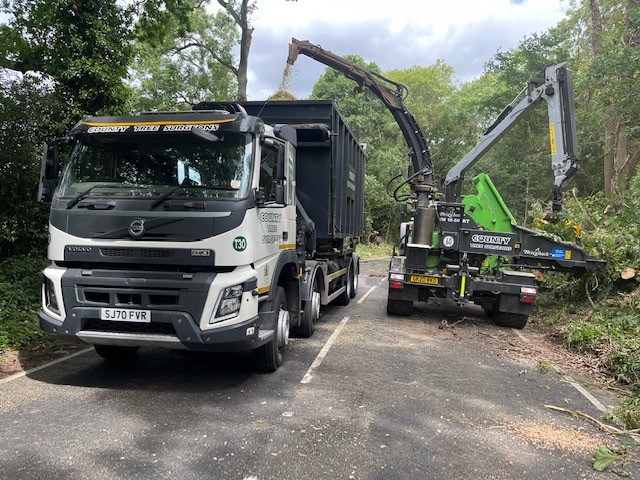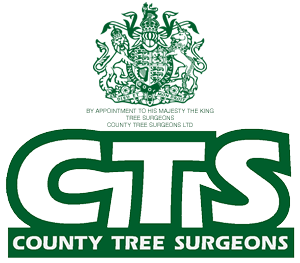
Ash dieback (Hymenoscyphus fraxineus), also known as Chalara dieback of ash, is a serious fungal disease that is affecting ash across Europe. Ash trees are one of the most common trees in the UK and the disease has had a severe effect on ash trees across the UK since it was first confirmed in 2012. It’s one of the most significant tree diseases to affect the UK since Dutch elm disease.
It can eventually lead to tree death, particularly in younger trees and can kill mature trees through secondary infections. There is no known cure for ash dieback and so we have to manage and remove any affected trees as carefully as possible.
The removal of infected trees brings with it specific and significant safety hazards. The disease makes the trees brittle and prone to unpredictable behaviour, which needs careful risk management and works planning to ensure works are undertaken safely.
Do you have to remove trees with ash dieback?
Every landowner has a duty of care for those on or near their land. Ash dieback can pose a risk to other trees nearby, to road users and pedestrians if the trees aren’t removed before they become in danger of falling. It also poses a risk to any operatives working on the trees. If any trees on your land fall, you could be liable for payment of damages or prosecution. You can also be ordered by the council to remove trees with ash dieback, or issued with a Section 154 notice (Highways Act 1980) to remove infected ash on your land.
How to remove trees with ash dieback
Ash dieback carries environmental and biosafety hazards as well as logistical problems of physically removing the affected trees. We have invested heavily in mechanical tree harvesting equipment and processing so we can minimise the risk to our operatives, members of the public and property. Owning our own machinery and transporting it ourselves means we can stay in control of where and when it’s used and by who, further minimising the risk of disease spread.
The process of dealing with trees affected by ash dieback
1. Site survey
A previous land survey may have established trees on your land have ash dieback. If this is the case, or if you suspect ash dieback, we will come and undertake a site survey. This will confirm which trees have ash dieback, those that need to be removed and if any others are likely to be affected.
2. Consultation and planning
Once we have confirmed cases of ash dieback, we inform the local authority as well as the Forestry Commission. We will check if any affected trees are protected and consult with site managers and landowners to formulate an agreed plan for dealing with or removing trees.
We’ll often also work alongside ecologists to safeguard any wildlife and their habitats. For example, we may have to remove trees in sections so they can assess damage.
3. Method statements and risk assessments
It’s important that everyone on site knows the work that needs to be carried out. The method statement outlines all the steps that need to be taken, any potential hazards and how they can be mitigated, all the equipment that’ll be needed (including PPE) and any emergency procedures. It is also vital that we carry out a risk assessment for both the action of removing trees and the resulting biohazards caused by ash dieback.
4. Timber and wood chip management
There is no restriction on the movement of felled ash. Some wood, particularly that from younger ash trees, can be repurposed. But to keep the spread of the disease to a minimum, burning or deep burying of leaves and other material is usually recommended, though each local authority has its own guidelines that we must adhere to.
It is also important to observe certain biosafety practices to minimise the spread of the disease between trees and sites.
Homeowners and ash dieback
If you have a tree or trees in your garden or on your private land with suspected ash dieback, please don’t delay in getting advice. It’s important to get specialist help and from a company with experience in dealing with ash dieback.
What are the signs of ash dieback?
Here’s how to identify if an ash tree is diseased
- The first signs appear in the leaves where dark patches develop
- Leaves wilt, turn black and may fall early
- Diamond-shaped dark lesions form on branches, usually near leaf joints
- Crown dieback starts at branch tips and progresses inward.
Young trees often show signs of ash dieback first, dying within 1-2 seasons. In mature trees, disease progression may take several years. Young shoots often die back, giving a characteristic “dead stick” appearance. And during summer, white/cream fungal fruiting bodies can be found on fallen leaf stalks.
If you think you have ash dieback in your trees, or would like advice on the disease and how to manage it, please contact us today on 01342 719567 or contact us.
